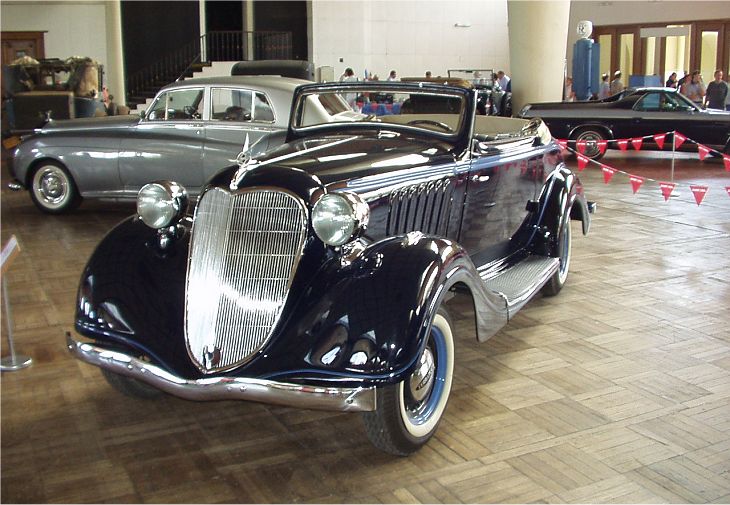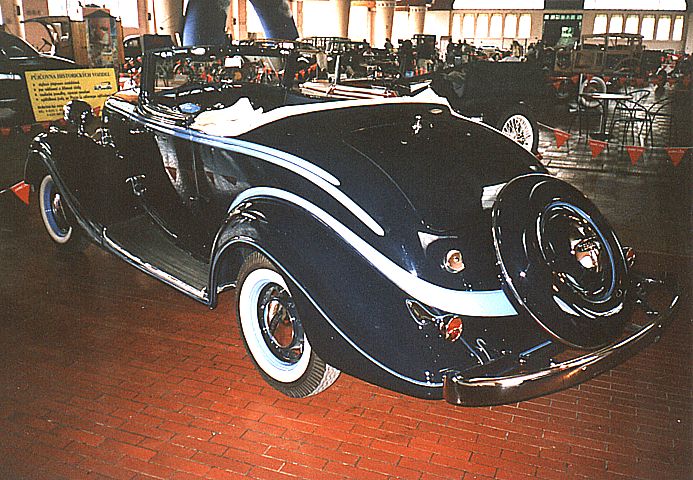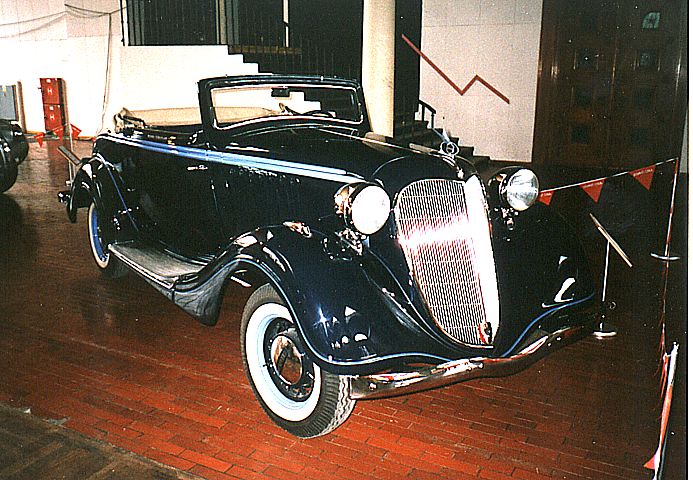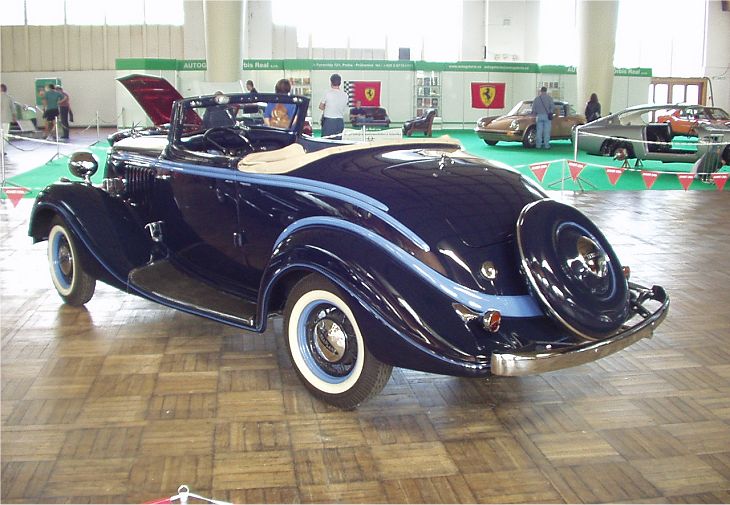Description
The Hudson Terraplane was one of the most dynamic and successful automobiles produced by the Hudson Motor Car Company during the 1930s. It combined lightweight engineering, strong performance, and elegant styling to deliver a car that was both affordable and exhilarating to drive. Introduced in 1932 under the name Essex Terraplane and later rebranded simply as the Hudson Terraplane, it was a vital model for the company during the Great Depression—offering speed, dependability, and style to a market desperate for value.
The Terraplane emerged as Hudson’s response to a changing automotive landscape. By the early 1930s, the economic crash had devastated demand for large, expensive cars, forcing manufacturers to produce smaller and more efficient models. Hudson had previously found success with its Essex line, but the company wanted something that felt modern and exciting—a car that would capture public attention and rejuvenate its image. The result was the Terraplane, a car marketed as “the fastest and most powerful car in its price class.”
Mechanically, the Terraplane was an impressive achievement. It used a sturdy but lightweight steel chassis and a choice of inline six- or eight-cylinder engines, both noted for their smoothness and torque. The 1932 Essex Terraplane Six featured a 3.5-litre L-head engine developing around 70 horsepower, while the optional straight-eight produced close to 90 horsepower—remarkable performance figures for a mid-priced car of the era. The Terraplane’s relatively light construction, advanced suspension, and low center of gravity gave it agile handling and brisk acceleration, making it popular with both motorists and law enforcement agencies.
Hudson engineers were determined that the Terraplane would be more than a stripped-down economy car. It featured hydraulic shock absorbers, mechanical brakes with excellent stopping power, and careful attention to chassis balance. Owners praised its comfort and stability, particularly at higher speeds where many competitors felt nervous. This blend of affordability, refinement, and driving pleasure helped the Terraplane stand apart in a crowded market.
The car’s styling also played a key role in its appeal. Designed during a time of rapid stylistic evolution, the Terraplane reflected the early influences of streamlined, aerodynamic form. It featured a long bonnet, flowing front fenders, and a sloping rear, creating a sense of motion even when stationary. Chrome accents, wire-spoked or pressed steel wheels, and bold radiator grilles gave it a sporting character that contrasted sharply with the upright sedans of the late 1920s. Available as a coupe, roadster, convertible, or sedan, the Terraplane offered versatility and modern looks at a price within reach of the average buyer.
Hudson cleverly marketed the Terraplane as both a family car and a performance vehicle. The company enlisted aviation pioneer Amelia Earhart to christen the first model, reinforcing the connection between the name “Terraplane” and the excitement of flight. Advertisements emphasized its speed and endurance, with slogans such as “The car that flies on land.” Demonstrations of its power and reliability were staged across America, and in numerous contests and hill climbs, the Terraplane outperformed more expensive rivals, earning a reputation as a “giant killer.”
In the years that followed, the Terraplane continued to evolve. In 1934, the Essex name was dropped, and the car became the Hudson Terraplane. That year’s models featured a new chassis with improved ride comfort, updated styling with art deco influences, and continued use of both six- and eight-cylinder engines. By 1936, the Terraplane had matured into a refined, mid-range car offering impressive performance and comfort for its size and cost. Its combination of speed, lightness, and strength made it a favorite among private owners, racers, and police departments alike.
The Terraplane line remained in production until 1938, when Hudson unified its model range under its main brand name. The final Terraplanes, known as the Hudson 112, carried over much of the engineering that had made earlier versions so popular but wore updated, streamlined styling that pointed toward the future of automobile design.
Though its production life was relatively short, the Terraplane had a profound impact on Hudson’s fortunes and reputation. It helped the company weather the financial difficulties of the Depression and re-established its image as an innovator in performance and engineering. The success of the Terraplane also laid the foundation for Hudson’s later achievements, including the famous “Step-Down” models and NASCAR-dominating Hornets of the 1950s.
Today, the Hudson Terraplane is remembered as one of the standout American cars of the 1930s—a machine that combined economy with excitement and engineering precision. Surviving examples are highly valued by collectors, appreciated for their advanced design, graceful styling, and the historical significance of their role in keeping Hudson alive during one of the toughest decades in the automobile industry.
The Terraplane remains an enduring symbol of Hudson’s ingenuity—a car that proved even in hard times, performance, craftsmanship, and imagination could still thrive.




